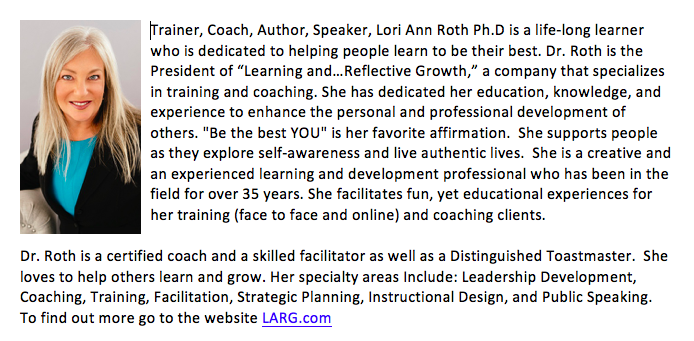Have you ever been tapped to train others on something you’re incredibly good at? Congratulations! But wait, what? You’ve never actually trained anyone before? Welcome to the world of the accidental trainer! Don’t panic. With a little preparation and the right mindset, you can confidently step into that training role. Here are some of the things you need to know:
Embrace Your Inner Teacher
Leverage Your Expertise
You’ve been recognized for your skills for a reason. Trust your knowledge and experience. Your enthusiasm for the subject matter is contagious! Remember not to give them all your knowledge at once. It took you a while to learn this skill. Be patient while you are training others.
Understand Your Audience
Who are you training? What do they already know? What do they need to learn? Tailor the training to their specific needs and learning styles. Find out as much about your audience as you can before the training. Ask about their styles, experience, and knowledge. The more you know about them, the better you can relate to them and the better they can learn. Be ready to explain something many ways, many times. Have examples people can relate to in your back pocket.
Practice Active Listening
Pay attention to your trainees’ questions and feedback. This will help you adjust your approach and ensure everyone understands the material. Be sure you understand the question before you answer. You may wish to paraphrase the question in your own words to be sure you have it correct. Be prepared to answer questions patiently and remember, you will get the same questions each time you train the material.
Structure is Your Friend
Know Objectives
A well-structured training session keeps everyone on track. Create clear objectives and understand how you will know when a trainee has met the objectives. Much has been written about training objectives. You can use the ABCD method to be sure you know exactly what you expect from your people. Then you can measure their results using the objective as the criteria. For example, if the objective is “list the ingredients you need to bake a chocolate cake”, be sure your trainee has created that list. That would be the way to “test” them.
Chunk it
Break down complex information into manageable chunks. Chunking information into smaller pieces helps everyone learn better. Also, remember you don’t have to teach everything at one time. What is easy for you, may not be easy for everyone. Allow time for practice and breaks. You could use microlearning to teach your subject in 10-minute bites, take a break, and continue at another time. Many people like videos or other visual aids for smaller “lessons”.
Use Visual Aids and job aids
Slides, handouts, or demonstrations can enhance understanding and engagement. Flow charts or numbered lists can greatly help as a job aid. When creating job aids Keep It Simple! Use numbers when the people you are training need to do things in order. Use bullets when they must do all of the below but not in any order. Many people love to have a video they can watch at their learning pace and can rewatch it. Often, we are trained then time goes by, and we forget the steps. A good job aid can help when our memory doesn’t.
Share Expectations
Be sure the trainees understand what is expected at the end of the training. The objectives are a great start, but you can also “begin with the end in mind” (covey). Know how you will evaluate the training. Kirkpatrick’s 4 levels of evaluation is a great place to start. Also, know how much and what quality you want them to learn. For example, do they just need to know the stuff, or do they need to analyze the material? One of my favorite tools is Blooms Taxonomy. I know exactly how much they need to know, and I share that information with my learners.
Build Rapport and Engagement
Create a Welcoming Atmosphere
Make your trainees feel comfortable and valued. Learn the names of the people you are training. Everyone wants to feel welcomed and knowing names and pronouns makes people feel safe. Never put anyone on the spot. Feel free to go first, to model any behavior or demonstrations.
Be Yourself
Use your talents, strengths, and personality to give your learners real-life examples. Let them know what you have tried and how you have failed. Most people love stories about how we have failed but learned from our mistakes. Don’t be afraid to share your experiences as the expert. Just be humble about it.
Encourage Participation
Ask questions, facilitate discussions, and encourage hands-on activities. Stay away from the “sage on the stage”. Make your training as practical and experiential as possible. Be sure to wait after you ask a question. A common mistake for beginning trainers is to ask, “Are there any questions? Then they wait two seconds and say, “Good”, then continue. Don’t be afraid of silence. Wait for a response. Also, remember that if one person asks a question, there are probably two others who have the same question but didn’t ask.
Seek Feedback and Learn
Ask for Input
Don’t be afraid to ask your trainees for feedback on your training style and content. Usually, there is an evaluation at the end but don’t rely on the smile sheet. Ask a seasoned trainer to sit in on one of your classes to give feedback.
Reflect and Improve
Use feedback to identify areas for improvement and adjust for future sessions. I always journal about the classes I taught so I can reflect on how I can make it better for the next time I teach. Not only do I improve the curriculum, but I also try to improve my training methods.
Seek Out Resources
There are plenty of resources available to help you develop your training skills. Check out www.td.org a website for professional trainers. Consider attending workshops or webinars. Look for a mentor.
The Most Important thing!
Put the focus on your learners
Too many times new trainers are in their heads and thinking about how they are doing. That is the opposite of a good trainer. A good trainer puts all the focus on their learners. Know your stuff, be confident (not cocky or conceited), and concentrate on your learner. Listen, give feedback, encourage, and have them practice until they master the skill. Caring for whom you are teaching is the special sauce of being a great trainer.
Remember, becoming a trainer is a learning process. It’s okay to make mistakes. Just learn from your mistakes. Focus on building confidence and providing value to your trainees. With the right approach, you can transform from an accidental trainer to a confident and effective educator.
Let me know if you need a train-the-trainer class. I love helping adults learn!
#accidentaltrainer #Training #adultlearningtheory




